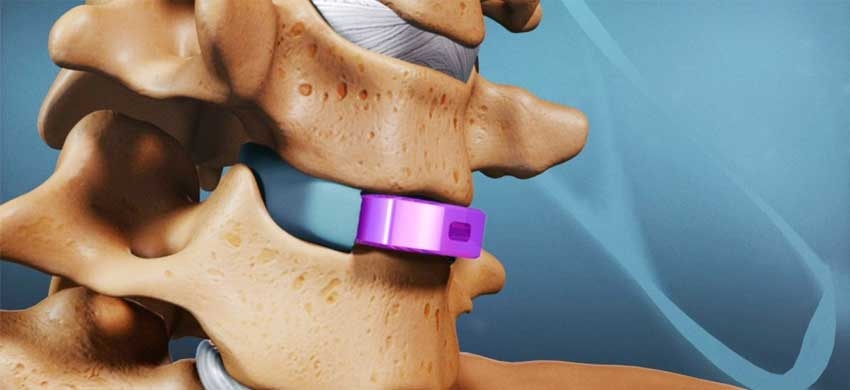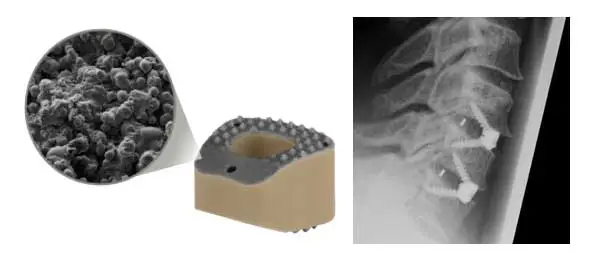
Discectomy and Fusion (ACDF)
(ACDF) is an operation to remove a herniated or degenerative disc in the neck which could be causing arm or neck pain, or spinal cord compression. An incision is made in the front of the neck to reach the front of the spine. The disc is removed and a graft is inserted to fuse together the bones above and below the disc.
The indications for an (ACDF) are that a patient must have a symptomatic cervical disc, which may be causing arm pain, arm weakness or numbness, and/or some degree of neck pain. These symptoms may be due to a herniated disc and/or osteophytes (bone spurs) compressing adjacent nerves or the spinal cord. This condition most commonly occurs at cervical spine levels C4-C5, C5-C6, or C6-C7.
Prior to being considered for an ACDF, the candidate must usually meet defined criteria, such as:
- Significant neck pain and/or pain, and possibly neurological symptoms, that radiates into the arm(s)
- At least 4 to 6 weeks of nonsurgical treatment, usually consisting of at least anti-inflammatory medications, physiotherapy, or nerve root block injections
- No prior neck surgery (preferably)
- Suitable general health for safe anesthesia
Considerations for Cervical Disc Surgery
It is important to note that most patients with symptoms from a herniated disc, degenerated disc, and/or arthritis in their neck do not need surgery. They classically improve with nonsurgical treatment, such as anti-inflammatory medications, physiotherapy, or cold/heat therapy. More than 90 percent of patients will experience pain relief with nonsurgical methods within 4 to 6 weeks. For patients who do not experience sufficient pain relief or ability to function, surgery may be an option. For most of these patients, both anterior cervical discectomy and fusion (ACDF) and cervical artificial disc replacement are viable surgical options to consider.
Surgical Procedure for ACDF
The standard surgical procedure for an ACDF requires an anterior approach (from the front) to the cervical spine.
The ACDF operation will typically include the following:
- An incision is made in the front of the neck, then the neck muscles, trachea, and oesophagus are moved aside in order to access the front of the cervical vertebrae and discs.
- The affected disc is completely removed, as are any disc fragments or osteophytes (bone spurs) that are pressing on the nerve or spinal cord.
- The disc space is distracted back to its normal disc height to help decompress the surrounding nerves. Restoring the original disc height is important; when a disc becomes worn out, it will usually shrink in height, which can contribute to nerve pinching in the neck.
- Using X-rays or fluoroscopy, a bone graft or fusion ‘cage’ is implanted into the prepared disc space. A fusion plate may also be applied to the front of the vertebrae to confer additional stability to the operated segment.
Postoperatively, the patient can go home within 24 hours with minimal activity limitations.
ACDF Risks and Complications
Risks of the procedure are uncommon. These include, but are not limited to :
- Nerve root damage
- Damage to the spinal cord, including paralysis (quadriplegia)
- Bleeding
- Infection
- Hoarse voice (recurrent laryngeal N. palsy)
- Tracheoesophageal injury
- Vascular injury
- Graft/cage dislodgment
- Damage to the trachea/esophagus
- Reoperation
- Continued pain
